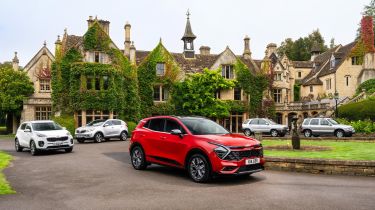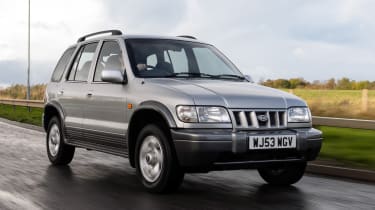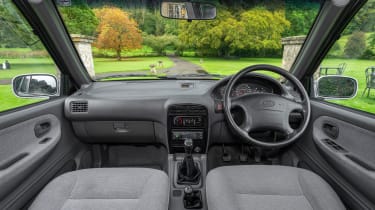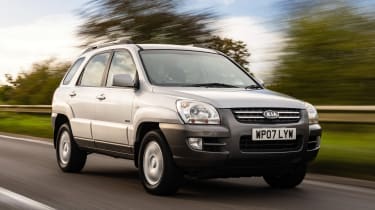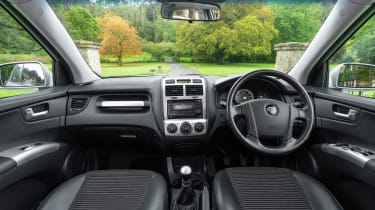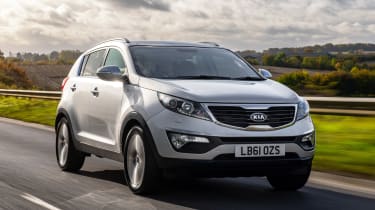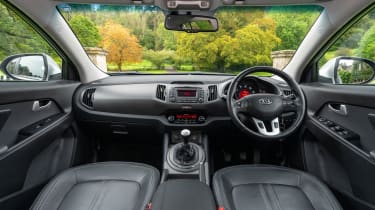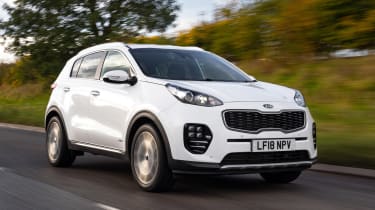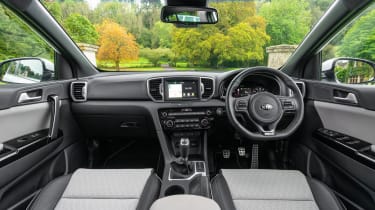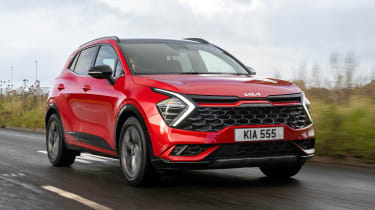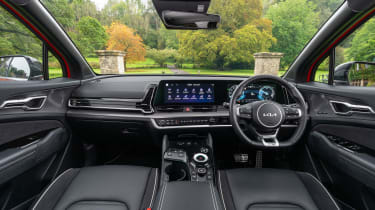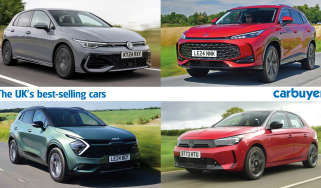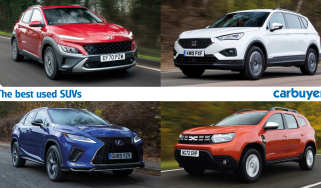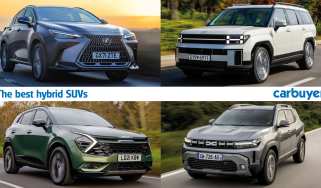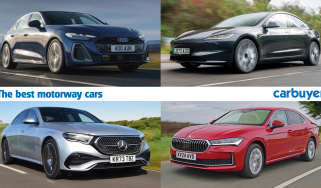Kia Sportage 30-year group test: every generation of an SUV family favourite
As the popular family SUV celebrates 30 years, we get behind the wheel of all five iterations
Hang up the bunting and put the candles on the cake, because the Kia Sportage turned 30 this year. What started life as an odd-looking ‘soft-roader’ in 1993 is now a head-turning tech-fest on wheels, one of Britain’s best-selling cars and Kia’s most popular model ever. More than seven million have been sold worldwide, including nearly 400,000 in the UK alone.
The Sportage’s success has certainly been helped by the unwavering rise in popularity of SUVs, but regardless, this Kia is now a fundamental part of the motoring landscape in the UK. Its evolution also maps the change in consumer taste and demand, as well as the manufacturer’s growth as a brand in a relatively short space of time.
What better way to illustrate the enormous progress of the Sportage over the years than by spending some time in the Cotswolds behind the wheel of every generation. Starting, naturally, with the Mk1 of the mid-nineties.
1995-2003 Kia Sportage Mk1
10,897 sold in the UK
The original Kia Sportage landed on UK shores in 1995, with the Toyota RAV4 and Suzuki Vitara among its compact 4x4 rivals. It used a body-on-frame construction, as found under much more hardcore off-roaders, although it sat on the same platform as the lesser-known Mazda Bongo van.
Mazda also made the 2.0-litre petrol engine in every Mk1 Sportage sold here. It could be paired with a four-speed automatic or five-speed manual gearbox, such as the one we drove, plus selectable 4WD. The Mk1 doesn’t hide its roots well, because the engine emits a similar roar to an old Ford Transit when pulling away, while the steering wheel is angled upwards towards your face. And yet, despite its utilitarian, hard-working nature, driving this early model requires surprising delicacy, especially when it comes to working the clutch in order to avoid being deafened by that vocal engine.
During our drive we were also reminded that the indicator stalk is on the ‘wrong’ side of the steering wheel, only realising this on approach to a busy T-junction. However, once you do finally get moving – and turn off the wipers – the amount of steering play is comical, and the car rolls a fair amount in corners or with quick direction changes.
While the Mk1 Sportage isn’t fun to drive in the traditional sense, we unexpectedly found it to be a decent motorway cruiser. In fact, we have driven brand-new cars that aren’t as quiet inside, with the only annoyance being a rattle coming from the rear windscreen – although we will chalk that up to this exceptional example from Kia’s heritage fleet being 20 years old. What’s more, the ride is relatively comfortable, the seats are nicely padded and the huge windscreen provides a good view ahead.
Grey fabric seats and headliner give an airy feel – not that the cabin needs help here, because the car’s boxy shape means there’s plenty of space up front. However, the raised rear bench means passengers feel like they are sitting on booster seats, with not much headroom on offer at all. Legroom isn’t great, either. The better news is that behind the spare wheel on the tailgate is a decent-sized boot, so it’s not all bad on the practicality front.
2005-2010 Kia Sportage Mk2
23,371 sold in the UK
While the Mk1 was laid to rest in 2003, its successor didn’t arrive until 2005. It was worth the wait, though, because the second-generation Sportage came with big improvements, the most significant being it was no longer based on a van. With Hyundai having taken part-ownership of Kia in 1998, the soft-roader was able to borrow the platform and other parts from the Tucson SUV.
The engine range expanded, too, with UK buyers offered 2.0-litre four-cylinder or 2.7-litre V6 petrols, plus diesel power in the form of a 2.0-litre CRDi four-cylinder. In addition, the Mk2 was the first version to be offered with front-wheel drive as the Sportage started to become the family-focused car we know it as today.
More obvious proof of that, which we noticed after hopping from the Mk1 directly into the Mk2, is the appearance of ‘proper’ creature comforts such as a built-in radio, cup-holders and chunky climate-control dials. Greater adjustment in the steering wheel and driver’s seat also meant we could get more comfortable for our drive, plus the cabin design itself seemed more stylised.
Although the overall look is slightly less block-like, the second-generation model still feels spacious due the sheer amount of glass. The rear cabin is much more usable, too, with plenty of legroom on offer compared with the Mk1, plus considerably more headroom and stowage.
This version also felt less agricultural to drive, with our test car’s diesel engine delivering plenty of low-down grunt and being smoother than the Mk1’s four-cylinder petrol. Pulling away isn’t as noisy, and general refinement has improved, with the six-speed manual in our car helping to keep things quiet on motorway journeys. Meanwhile, all the controls are reassuringly weighty, particularly the steering and gear lever. It all means this iteration requires less finesse to pilot, but should be more capable of putting up with the stresses of life on the road.
Not every ‘improvement’ proves to be positive, however. The noticeably softer ride comes at the expense of poor body control that makes things feel quite bouncy, with occupants jiggling in their seats across uneven surfaces.
In hindsight, the Mk2 is less charming than the original, but consumers at the time certainly would have appreciated the big jump in refinement, comfort and passenger space.
2010-2016 Kia Sportage Mk3
95,626 sold in the UK
While Kia sold twice as many Mk2 Sportages as Mk1s in the UK, this third-generation model was the car that finally propelled the brand into the big league. Its handsome and modern look certainly helped the Mk3 stand out against rivals such as the Ford Kuga, Honda CR-V and popular Nissan Qashqai, with this being the first iteration to feature Kia’s trademark ‘Tiger’s Nose’ grille. However, one compromise we noticed during our drive was that the new, sloped rear windscreen, along with small windows all round, restricted visibility to the back. A small price to pay for the extra injection of style perhaps?
There is more to like about the Mk3 than the pretty face, though. Tech and connectivity played a prominent role, with USB ports for connecting an iPod, parking sensors, voice commands activated by steering-wheel buttons, plus illuminated dials with a digital display that tells you when to change gear.
This was the first time the Sportage’s interior looked and felt modern, yet it remained spacious and didn’t compromise ergonomics. The indicator stalk also finally moved to the left-hand side – and while this perhaps wasn’t a big deal at the time, we certainly appreciated it all these years later after we failed to adapt in the first two models we drove.
From behind the wheel the Mk3 feels more mature and composed than its predecessors. Usually we’d resent a car’s ride becoming firmer, but this iteration is more stable and tied down than before, and offers a big improvement out on the road.
2016-2022 Kia Sportage Mk4
197,547 sold in the UK
By this point in time, both the Kia brand and the Sportage had found their groove, and as such the Mk4 model felt more like a refinement of what came before than a new and wholly different car. UK sales doubled once again, and in 2018 the five millionth example rolled off the line in Slovakia, where the model has been built since 2007.
This is not to say the Mk4 didn’t show noticeable improvements over the Mk3, with interior quality taking a big step up. The cabin design itself wasn’t especially jaw-dropping, but the array of physical buttons and dials impressed. What dates it most is the central infotainment touchscreen – oddly, more so than the Mk3’s basic set-up – but visibility is better, plus the rear feels more spacious and easier to get into and out of.
There is a pleasingly effortless quality to the driving experience in the 1.6-litre petrol, front-wheel-drive car that we tested, because there is plenty of power on tap, while accelerating feels smoother and less noisy. Also, the steering is light enough to make easy work of tight car parks and congested city streets. Speaking of which, the clutch and brakes in the Mk4 are simple to modulate, making the car ideal for stop-start town traffic. It’s easy to see why this model was such a hit in its day.
2022-present Kia Sportage Mk5
59,085 sold in the UK
All this brings us neatly to the current, fifth-generation Kia Sportage. We’ve driven and praised the latest model many times already, but what surprises us now, having spent time in each of its predecessors, is the characteristics that have been passed down through the generations.
For one thing, every cabin has a similar spacious quality, and ergonomics have clearly remained a priority. We’ve also noticed that, aside from the unnecessarily soft ride in the Mk2, the Kia continues to balance comfort, body control and stability particularly well, with later models adding lighter steering into the mix to help with manoeuvrability – an ideal combination for a family SUV, even if it means some rivals feel more sporty to drive.
Where the Mk5 differentiates itself is with its futuristic looks and equally interesting cabin design, with quality improving exponentially compared with that of the already impressive Mk4. It goes all-in on the technology front, too, with the cockpit dominated by a simply magnificent dual-screen infotainment set-up that embarrasses most rivals. Meanwhile, the switchable control bar contributes to a cleaner look without forcing drivers to dig through endless sub-menus for key functions, and is complemented by the kind of physical controls that are starting to become a rarity. The addition of hybrid engine options and their electric motors also adds to the sense of effortlessness that we liked so much in the Mk4.
It’s remarkable how far the Kia Sportage has come in only 30 years, yet as our drives have shown, there’s definitely a natural progression. We can only wonder where the next five generations will take us…
Find out where the latest Kia Sportage ranks in our list of the top 10 best mid-size SUVs...
Recommended

2025 Kia Sportage unveiled with striking new design
Most Popular

Omoda E5 targets rivals: now with zero deposit and APR
Tips & advice

Car dashboard warning lights: what does each symbol mean?

Electric car charging stations: public networks, charger types, apps and maps

